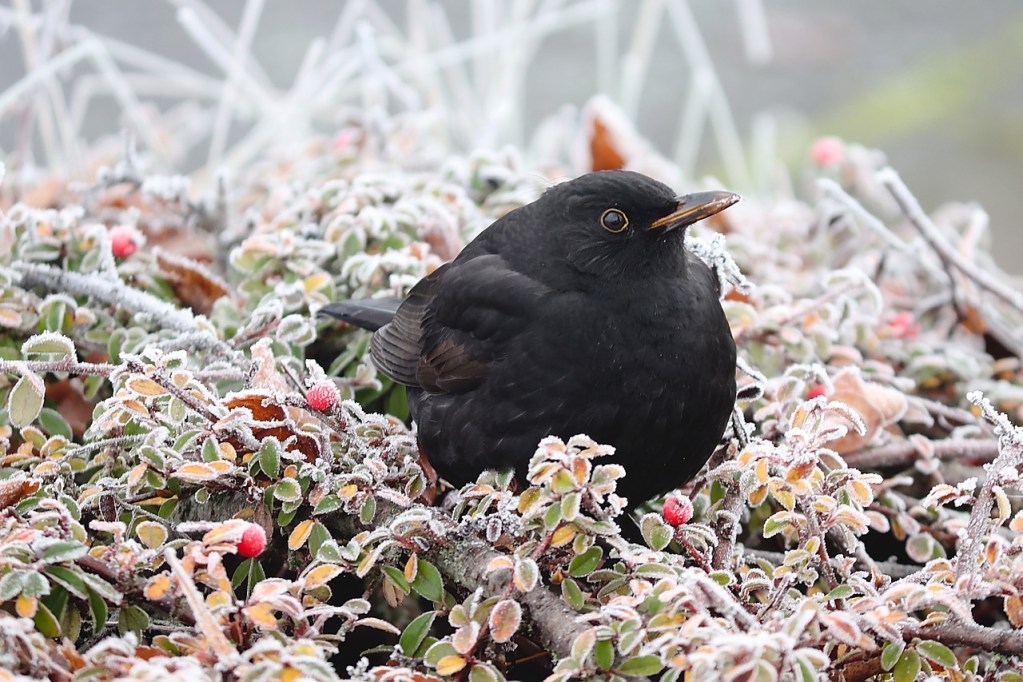
You spent all spring and summer tending to your garden. Now the weather is turning colder and the first heavy frosts are here. You’ll need to protect some of your plants from the cold, but your garden may have some frost-resistant plants that will be just fine on their own. If you don’t already have them, you can add these frost-resistant plants to your porch or patio in pots to keep your garden colorful even through winter. Not sure which plants to choose? This guide to frost-resistant plants will help you pick.
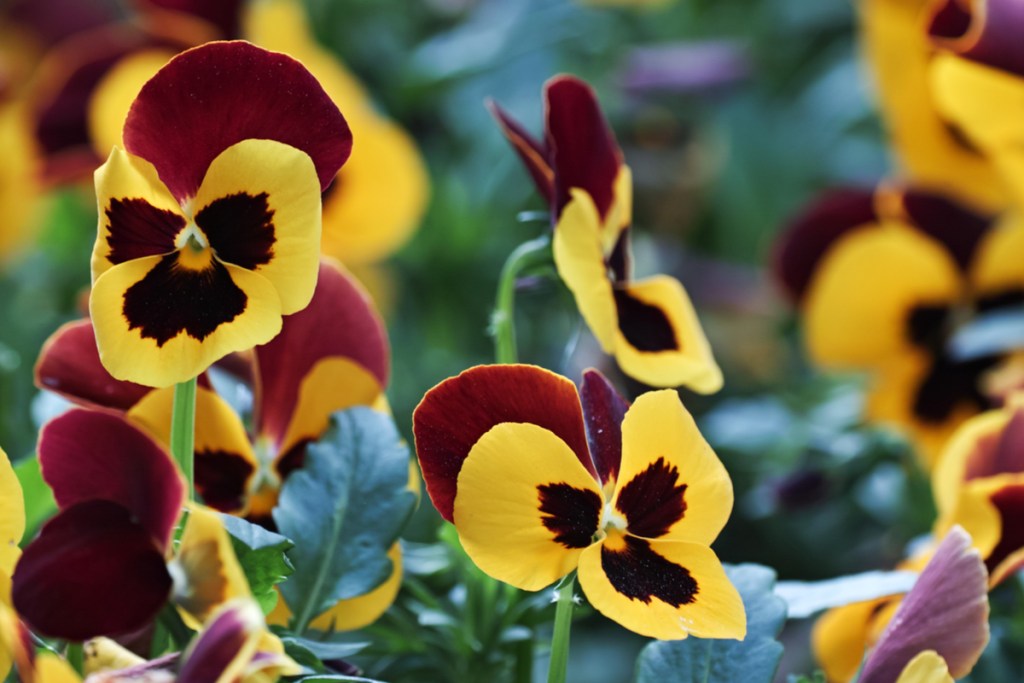
Which plants can survive a frost?
Evergreens are known for their ability to survive winter, but they aren’t the only cold-tolerant, frost-resistant plants out there! Leafy vegetables like cabbage, lettuce, kale, collards, and chard can tolerate some frost. Early spring blooming flowers like crocus, snowdrop, and primrose can all survive the winter, and pansies are especially resilient. Violas, hostas, heuchera, irises, lily of the valley, cyclamen, and phlox also tolerate frost and provide some visual interest, as do catmint, baptista, sedum, and peonies.
As a general rule of thumb, mature plants that are perennial and have numerous thick leaves and thick or deep roots survive frost better than other plants. However, most mature plants can survive frosts if they’re properly prepared.
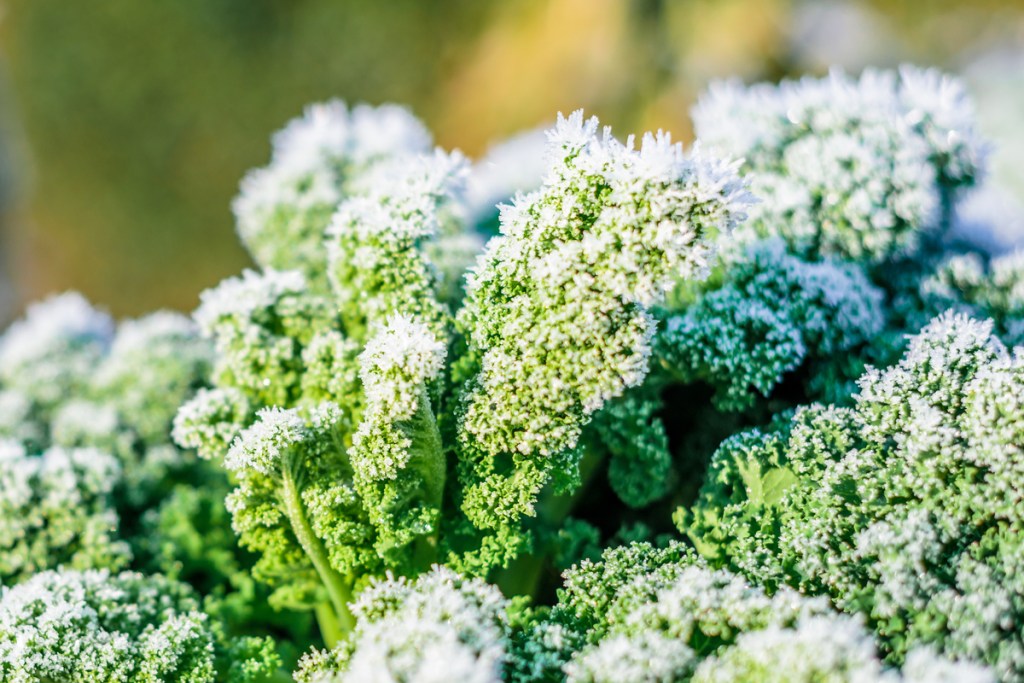
Should plants be protected from frost?
If you have young plants or plants that don’t tolerate the cold, then yes, they should be protected from frost. Plants that tolerate cold technically don’t need protection, but they may benefit from it, anyway. Protecting your plants from frost helps them survive the winter, which means less replanting in the spring.
Protecting your plants from the cold may seem unnecessary, since wild plants don’t get protection, but this isn’t entirely true. Plants in the wild may be protected by leaf litter or other nearby plants, or they may simply grow somewhere with a mild winter.
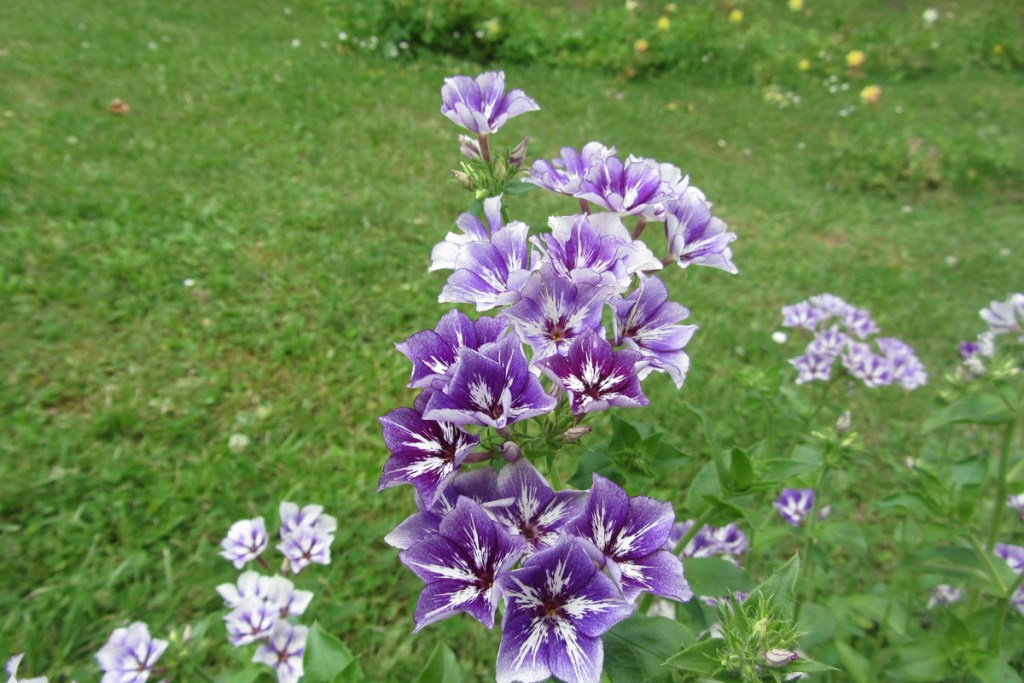
How cold is too cold for new plants?
In general, plants that are not cold-resistant start to become damaged when temperatures dip below freezing. Leaves contain a lot of water that can freeze, essentially causing frostbite. However, the younger your plant is, the sooner it starts to experience cold-related problems. Seedlings that have recently sprouted, for example, need temperatures that are above 50 degrees Fahrenheit. This is especially true of seedlings that began inside.
If you started your seedlings indoors, you can increase your seedlings’ resistance to the elements by hardening them. Hardening is the process of exposing your seedlings to the outdoors a little at a time. Set them in the shade for a few hours each day and move them slowly from the shade to the sun. Gradually increase the amount of time they’re outside; on warm nights, you can even leave them outside overnight. This is most effective in early spring, but it can be done anytime. Hardening your seedlings gives them a better chance of surviving outdoors, so if you need to plant seedlings in the fall, hardening is essential.
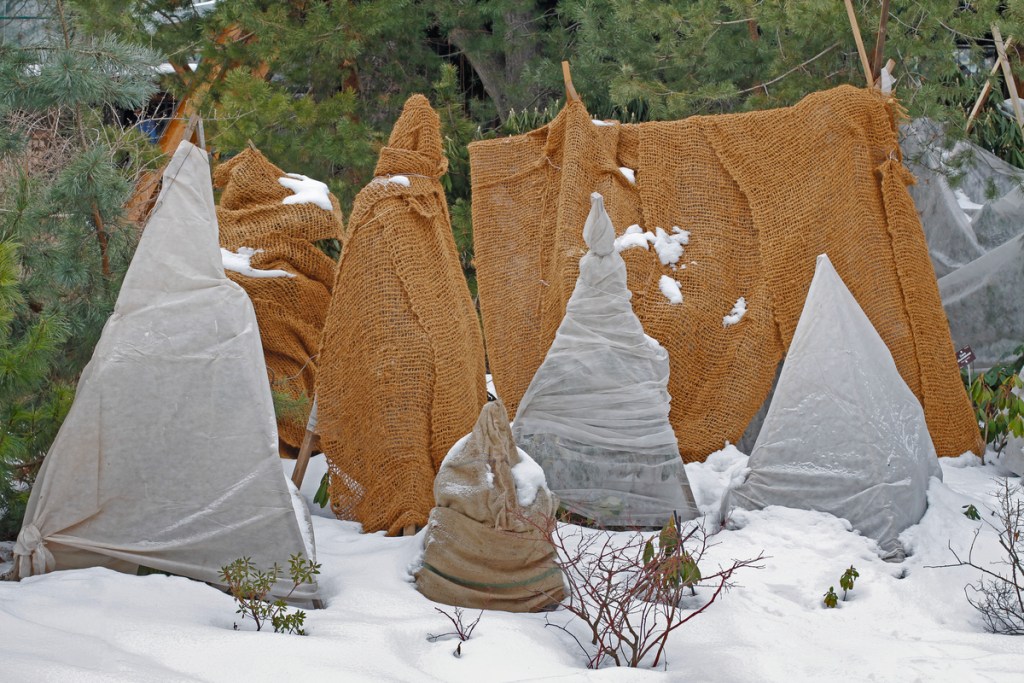
What is the best material to protect plants from frost?
For many plants, a thick layer of leaf mulch will do just fine to keep them warm. It insulates the roots and nourishes the plant as it breaks down. If you only expect the cold weather to last a short time, like an unexpected last frost before spring, you can cover smaller plants over with leaf mulch entirely. Just be sure to uncover them once the cold has passed or else they may suffocate. However, if you have plants that are more cold-sensitive, leaf mulch may not be enough.
A sheet of plastic or fabric secured over your garden helps keep heat in and cold out. Secure the sheet on the edges so it doesn’t blow away, but make sure it isn’t touching the plants. You can prop it up in the middle with stakes for larger plants, or you can use large rocks for smaller plants. This is a blanket fort for your garden. Any material will do, but if it’s going to rain or snow, keep in mind that most fabrics will absorb water, freeze, and become stiff.
During the day, uncover your garden so your plants can get some sun and you can water them. Water your plants on warm, sunny days if you can. This reduces the risk of the water becoming too cold and damaging the plant or even freezing.
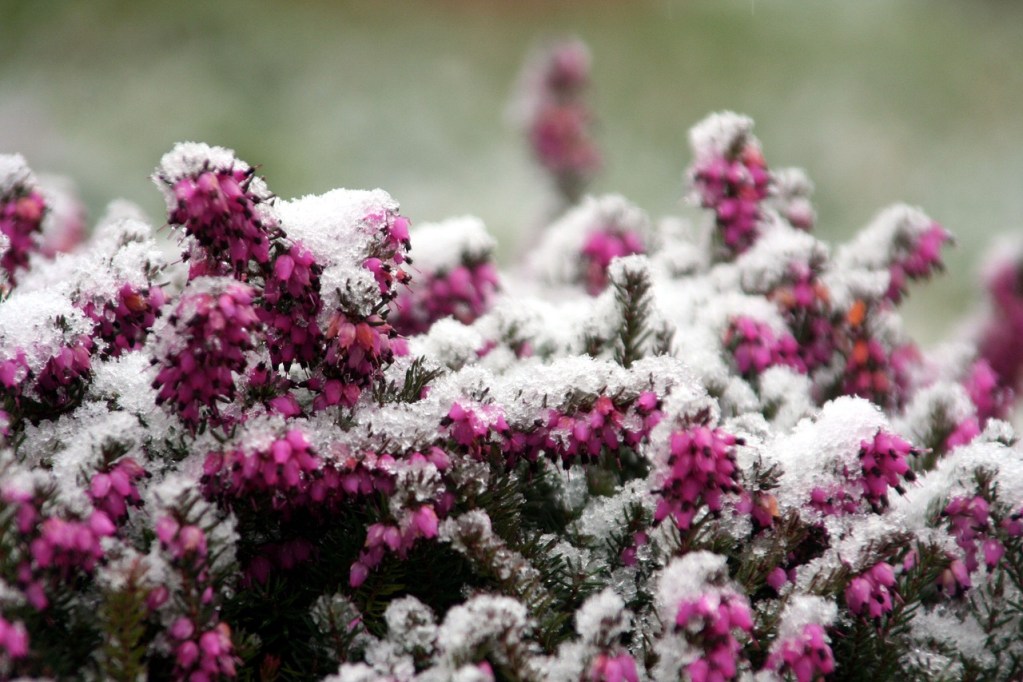
Which plants are sensitive to frost?
Plants that are particularly sensitive to frost will need extra protection. Take extra care when covering them, or bring them indoors if they are potted. Frost-sensitive plants you might have in your fruit and vegetable garden include those in the nightshade family (such as tomatoes, peppers, and eggplants) and most melons or gourds. Vining plants such as cucumbers and beans are easily damaged by frost as well. Many herbs are cold-hardy plants, but basil is not and should be brought indoors if possible.
In your flower garden, focus on protecting your annuals. Perennials are more likely to survive the cold, while annuals are more likely to suffer frost damage. Any tropical plants you have should be brought indoors or stored in a greenhouse, as they are adapted to hotter climates. Begonias, impatiens, geraniums, petunias, zinnias, and marigolds are some of the most common garden flowers prone to frost damage.
Hopefully, this helps set your mind at ease and makes your cold-weather gardening just a bit easier. No matter where you live, you can adapt your gardening practices to fit your home and way of life. It may be getting chilly for you, but now you can keep your plants nice and comfy.



